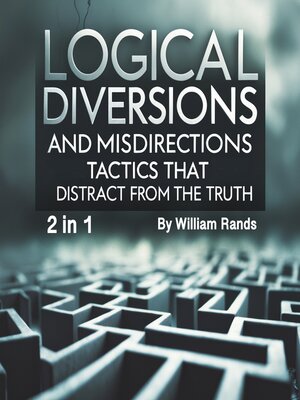Logical Diversions and Misdirections
audiobook (Unabridged) ∣ Tactics That Distract from the Truth (2 in 1)
By William Rands

Sign up to save your library
With an OverDrive account, you can save your favorite libraries for at-a-glance information about availability. Find out more about OverDrive accounts.
Find this title in Libby, the library reading app by OverDrive.



Search for a digital library with this title
Title found at these libraries:
| Library Name | Distance |
|---|---|
| Loading... |
This book consists of the following two titles:
- The Red Herring Fallacy: The Red Herring Fallacy is a common and effective tool for diverting attention from the main issue in an argument. It occurs when irrelevant information or topics are introduced into a discussion, leading the audience away from the core subject. The name "red herring" originates from an old English practice of using smoked fish to distract hunting dogs from a scent trail. In the context of logical reasoning, the concept is metaphorical, describing tactics that mislead or confuse. At its heart, the Red Herring Fallacy exploits our natural tendencies to become sidetracked by emotionally charged, intriguing, or seemingly relevant details. The distraction can take many forms: an unrelated anecdote, a tangential issue, or even an outright falsehood designed to provoke. These diversions can be deliberate, crafted to manipulate the audience, or unintentional, stemming from poor argumentation or misunderstanding. Regardless of intent, the result is the same—a shift in focus away from the actual matter at hand.
- The Straw Man Fallacy: The Straw Man Fallacy is one of the most pervasive forms of logical misrepresentation, often employed to simplify complex arguments for easier refutation. At its core, this fallacy involves constructing a distorted or exaggerated version of an opponent's position, subsequently attacking this weakened argument instead of addressing the original point. The technique, though logically flawed, can be compelling, as it plays on cognitive biases and simplifies discourse in ways that resonate with audiences.







